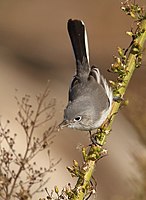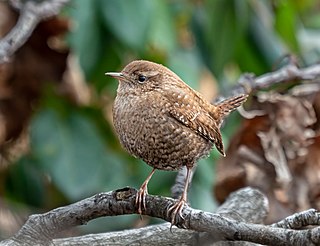
The winter wren is a very small North American bird and a member of the mainly New World wren family Troglodytidae. The species contained the congeneric Pacific wren of western North America and Eurasian wren (Troglodytes troglodytes) of Eurasia until they were split in 2010.

The orchard oriole is the smallest species of icterid. The subspecies of the Caribbean coast of Mexico, I. s. fuertesi, is sometimes considered a separate species, the ochre oriole or Fuertes's oriole.
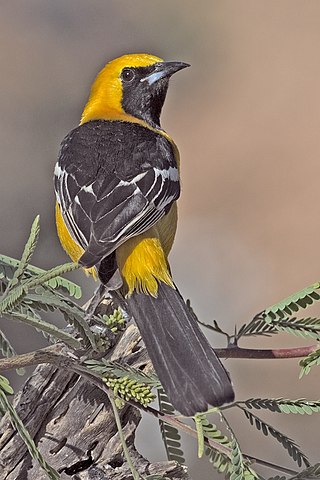
The hooded oriole is a medium-sized New World oriole. The male of this species ranges in color from a bright orange to a paler yellow, with a black back, face, tail and bib, with the wing containing two white bars. The female is more of an olive color with some yellow accents.
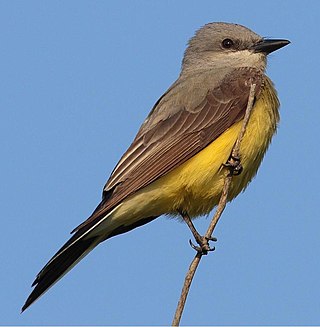
The western kingbird is a large tyrant flycatcher found throughout western environments of North America, as far south as Mexico.

The western wood pewee is a small tyrant flycatcher. Adults are gray-olive on the upperparts with light underparts, washed with olive on the breast. They have two wing bars and a dark bill with yellow at the base of the lower mandible. This bird is very similar in appearance to the eastern wood pewee; the two birds were formerly considered to be one species. The call of C. sordidulus is a loud buzzy peeer; the song consists of three rapid descending tsees ending with a descending peeer.

The northern parula is a small New World warbler. It breeds in eastern North America from southern Canada to Florida.

The Iquitos gnatcatcher is a bird in the family Polioptilidae. It was first described in 2005. It is known only from the Allpahuayo-Mishana National Reserve, west of Iquitos, Peru.

The blue grosbeak, is a medium-sized North American passerine bird in the cardinal family Cardinalidae. It is mainly migratory, wintering in Central America and breeding in northern Mexico and the southern United States. The male is blue with two brown wing bars. The female is mainly brown with scattered blue feathers on the upperparts and two brown wing bars.

The black-tailed gnatcatcher is a small, insectivorous bird which ranges throughout the Sonoran and Chihuahuan Deserts of the southwestern United States and northern Mexico. It is nonmigratory and found in arid desert areas year-round.
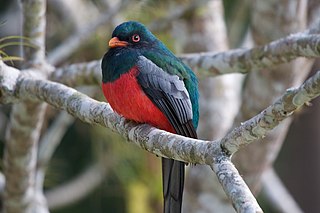
The slaty-tailed trogon is a near passerine bird in the family Trogonidae, the quetzals and trogons. It is found in Mexico, throughout Central America, and in Colombia and Ecuador.

The lesser greenlet is a small passerine bird in the vireo family. It breeds from northeastern Mexico south to western Ecuador.
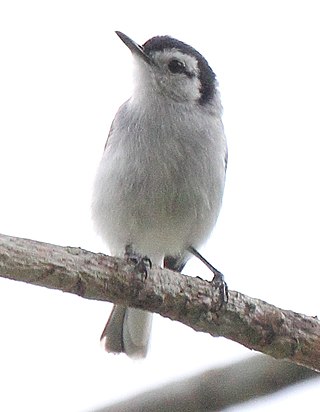
The tropical gnatcatcher is a small active insectivorous songbird, which is a resident species throughout a large part of northern South America. It was formerly considered as conspecific with the white-browed gnatcatcher.

The plain-capped starthroat is a species of hummingbird in the "mountain gems", tribe Lampornithini in subfamily Trochilinae. It is found from Mexico to Costa Rica.

The black-capped gnatcatcher is a small songbird in the family Polioptilidae. It is found in Mexico and the United States.
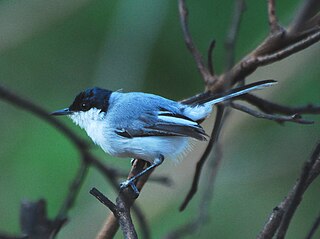
The white-lored gnatcatcher is a species of bird in the family Polioptilidae. It is found in Costa Rica, El Salvador, Guatemala, Honduras, Mexico, and Nicaragua.
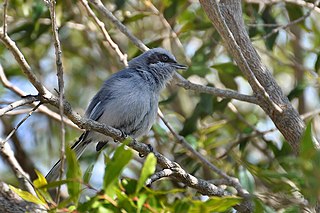
The masked gnatcatcher is a small songbird in the family Polioptilidae. It is found in Argentina, Bolivia, Brazil, Paraguay, and Uruguay.

The creamy-bellied gnatcatcher is a species of bird in the family Polioptilidae. It is found in Argentina, Brazil, and Paraguay.
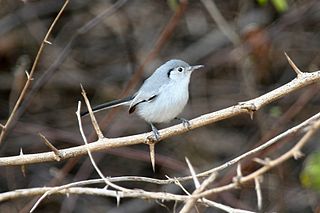
The Cuban gnatcatcher is a species of bird in the family Polioptilidae, the gnatcatchers. It is endemic to Cuba.

The Inambari gnatcatcher is a species of bird in the family Polioptilidae. It is endemic to Brazil.

The Yucatan gnatcatcher is a species of bird in the family Polioptilidae. It is endemic to the Yucatán Peninsula in Mexico.



